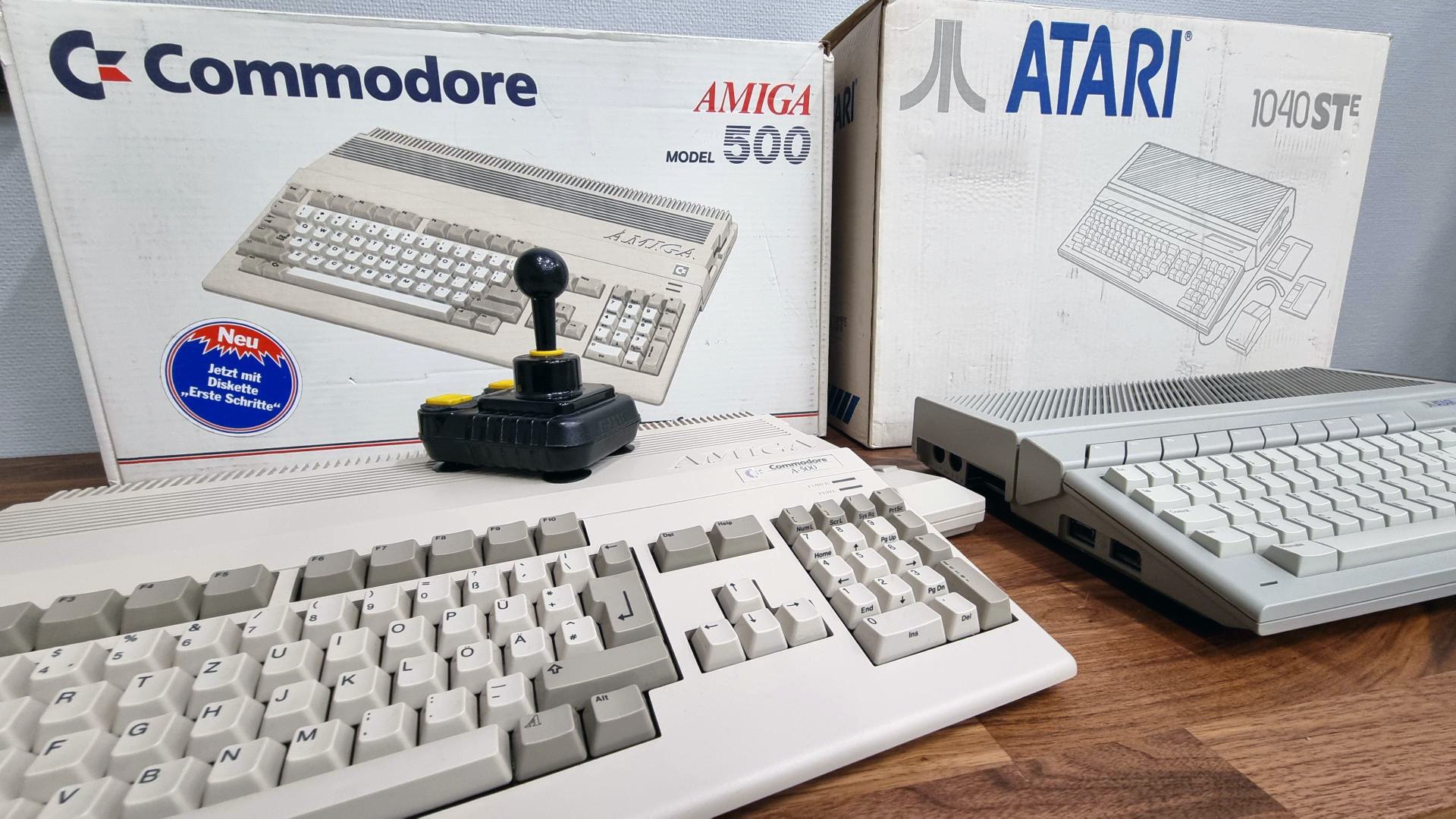Unpacking a massive Amiga collection
As of late we have one notable addition to the archive – a grand collection from the UK mainly consisting of Amiga games. The unpacking and sorting has gone on for weeks now. As the archive administrator I get involved with a lot of different things related to our daily business. Right now I have the privilege of going through each item within this collection.
At the archive we are currently lacking items for many home computers. Securing this collection was a big step in the right direction for us. The sheer amount of games here is staggering to think about: 10,000 boxed Amiga games and 1,500 boxed Atari ST games. A respectable number of Commodore 64 and PC games are contained here as well.

For those of you unaware, the Amiga was a computer platform widely used for games in Europe and video production in general during the late 80s and early 90s. People all over the world were doing a lot more with these machines of course but that’s the quick explanation.
Unpacking has been quite the experience. I’ve seen a fair amount of the really memorable titles like Sensible Soccer, Turrican II, Speedball, Shadow of the Beast and the likes in a good variety of different versions, small-size budget releases, large premium releases with free T-shirts inside etc. Games and software in all shapes and forms. Cardboard boxes, clamshells, jewel cases, zip bags. As someone who is dealing with preservation, it was especially fun seeing some seemingly self-published games, also lesser known titles published in Poland and other parts of central and eastern Europe.

The Amiga line of computers first started with the 16-bit Amiga 1000 released back in 1985. Early games like Defender of the Crown really showcased what the computer could do, featuring graphics and sound never seen in a home system before. For some years its hardware was completely uncontested.
The price point was kind of high however, retailing for 1,300 USD at launch (3,750 USD roughly in today’s money) and sales were lagging behind as a result. It saw itself leapfrogged by the cheaper competitor in the 16-bit computer scene – the already mentioned Atari ST. But this quickly changed when Commodore released the Amiga 500 in 1987 costing half the price of the earlier model. This one had a iconic cheaper design in which the keyboard was built in like many home micros at the time. The A500 became the most popular model by far out of all the Amigas (which there were many of, look it up).

Even though Commodore and Atari both were American companies, the Amiga and ST saw more notable success in Europe as Apple and IBM had a too strong presence at home. Most game developers were based in Europe because of this. But there are more factors. The demo scene, being particularly strong around here, also helped keeping the user base alive. Greg Pratt of Atari USA famously outed the words “Atari would go under without Europe” around that time. The popularity might be brief looking back but it was pretty significant while it lasted.
Bottom line, these home computers are something you should care about. Their games and applications needs to be preserved as part of history and culture.



